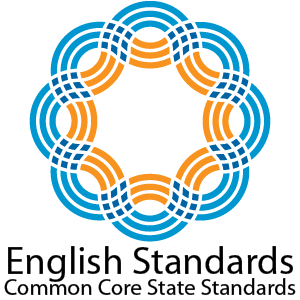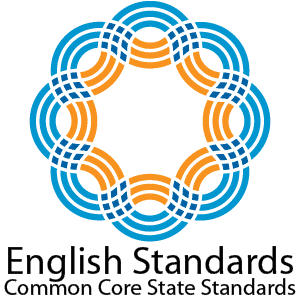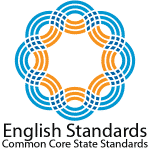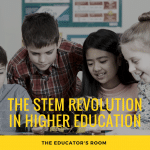Read Part 1 of this series about Reading Standards here.
[fusion_builder_container hundred_percent=”yes” overflow=”visible”][fusion_builder_row][fusion_builder_column type=”1_1″ background_position=”left top” background_color=”” border_size=”” border_color=”” border_style=”solid” spacing=”yes” background_image=”” background_repeat=”no-repeat” padding=”” margin_top=”0px” margin_bottom=”0px” class=”” id=”” animation_type=”” animation_speed=”0.3″ animation_direction=”left” hide_on_mobile=”no” center_content=”no” min_height=”none”]
Princess, my first grader, writes all of the time. One day in kindergarten, after getting into trouble at home, I found a note taped onto the wall beside her bedroom door: “Git my stompys or im not ginoo clen my room git thym now”. [/fusion_builder_column][fusion_builder_column type=”1_1″ background_position=”left top” background_color=”” border_size=”” border_color=”” border_style=”solid” spacing=”yes” background_image=”” background_repeat=”no-repeat” padding=”” margin_top=”0px” margin_bottom=”0px” class=”” id=”” animation_type=”” animation_speed=”0.3″ animation_direction=”left” hide_on_mobile=”no” center_content=”no” min_height=”none”][For anyone who is not fluent in kindergarten it said, “Get my Stompies or I am not going to clean my room. Get them now!”] I understood the message. Her new Stompie slippers had been taken as well as a few other things from her bedroom floor. The expectation is she takes care of her own items. She had left them on her bedroom floor. I cleaned up for her, but she had to earn the items back. She was not happy about this. Her frustration was clearly communicated.
Writing in the classroom can feel like it is being written and taught in a capsule. In the world, writing has purpose and meaning and feeling. Great teachers are already pushing their students to research, produce, and reflect on their own writing. Technology opens up the world to our students and allows for real communication to be explored and learned. As we teach writing we must allow out students to writing in real context, with real purpose, and for a real audience.
In my series this month on Career and Readiness Common Core Standards, I am addressing ways to bridge what you are already doing with the new standards. Last week I discussed the anchor standards in reading. http://theeducatorsroom.com/2013/11/step-teach-ela-reading-standards/ This is the list of the anchor standards for English Language Arts in writing from http://www.corestandards.org/ELA-Literacy/CCRA/W. You can find your grade level specific standards there too.
Text Types and Purposes
- CCSS.ELA-Literacy.CCRA.W.1 Write arguments to support claims in an analysis of substantive topics or texts using valid reasoning and relevant and sufficient evidence.
- CCSS.ELA-Literacy.CCRA.W.2 Write informative/explanatory texts to examine and convey complex ideas and information clearly and accurately through the effective selection, organization, and analysis of content.
- CCSS.ELA-Literacy.CCRA.W.3 Write narratives to develop real or imagined experiences or events using effective technique, well-chosen details and well-structured event sequences.
Production and Distribution of Writing
- CCSS.ELA-Literacy.CCRA.W.4 Produce clear and coherent writing in which the development, organization, and style are appropriate to task, purpose, and audience.
- CCSS.ELA-Literacy.CCRA.W.5 Develop and strengthen writing as needed by planning, revising, editing, rewriting, or trying a new approach.
- CCSS.ELA-Literacy.CCRA.W.6 Use technology, including the Internet, to produce and publish writing and to interact and collaborate with others.
Research to Build and Present Knowledge
- CCSS.ELA-Literacy.CCRA.W.7 Conduct short as well as more sustained research projects based on focused questions, demonstrating understanding of the subject under investigation.
- CCSS.ELA-Literacy.CCRA.W.8 Gather relevant information from multiple print and digital sources, assess the credibility and accuracy of each source, and integrate the information while avoiding plagiarism.
- CCSS.ELA-Literacy.CCRA.W.9 Draw evidence from literary or informational texts to support analysis, reflection, and research.
Range of Writing
- CCSS.ELA-Literacy.CCRA.W.10 Write routinely over extended time frames (time for research, reflection, and revision) and shorter time frames (a single sitting or a day or two) for a range of tasks, purposes, and audiences.
Text Types and Purposes is about expanding your students writing knowledge and experiences. Students should practice and participate evenly in three varieties of text: persuasive, informative, and narrative. Narrative is the area most elementary classrooms spend the majority of their writing time. With computer coding and blogging becoming such a popular activity, you can push your students beyond narratives into informational and persuasive writing. Students can use their science, mathematics, and social studies knowledge to write about ideas and demonstrate understanding using valid reasoning and evidence. It is exciting to see schools continue to bridge subjects and include more writing in mathematics, science, and social studies enabling students to explain their thinking and learning.
- Have students write a report about a given topic. Then work through the writing process to create a final copy in a multi-media format to share with a younger classrooms.
- Have students create an infographic representing information from a classroom topic.
- Have students create a lesson on a given topic for a small group of younger students.
- Have students play an online game (Pingus works well as the levels are short). After successfully completing a level, have students write directions for an activity. Check out this link for a full lesson plan. http://www.teachengineering.org/view_activity.php?url=collection/ksu_/activities/ksu_pingus/ksu_pingus_activity1.xml
- Have students write computer code to manipulate a script using the iPad Hopscotch App or Scratch online.
- Read a picture book aloud. Discuss the plot and characters. Then have students rewrite the story in a new setting or time period.
Production and Distribution is about opening the doors of your classroom to the world. Students should use the six-trait writing process to create, edit, review, and create final copies of their work. There are many options for publishing students work in print and digital formats.
- Have students demonstrate a mathematical concept using Educreations or a similar program to teach parents. Post these on your blog.
- Have students produce and publish their narrative writing online to share with an audience of peers using the iPad Scribble Press App or Story Jumper http://www.storyjumper.com/ or TikaTok https://www.tikatok.com/ online.
- Have students write a persuasive letter to an author, government official, or school board member to explain an idea they have for something new or different.
Research to Build and Present Knowledge is about research, just like it states. Students should work to find information from books as well as online. Elementary students should understand they need to include where their information is found and middle school and high school students should include bibliographies in their reports. Part of the report process is using the information to synthesize their project, avoiding plagiarism. Students must also be taught to understand how to find authentic resources and to question the authenticity of information.
- Provide a list of sites and print materials for students to research information about a given topic and create a brochure, information flyer, or booklet.
- Have students list three reliable resources that could be used to find information about a given subject. What makes them reliable? How do you know they are authentic?
- Have students list three unreliable resources for research. What makes them unreliable? How do you know they are not authentic?
- Have students write a list of questions someone could use to know more about a given topic.
- Have students list or find three living people they could interview about a given subject or topic.
Range of Writing is about time. Have students write short, simple pieces that are written in one setting and move on. Also allow time to research and write on longer ideas over multiple days. Provide time and support for students to write, reflect, edit and go back to their work. After the first semester allow students to look through their writing and select pieces they would like to edit or explore further. This is about varying the time and length of pieces as well as understanding some writing is done once while other writing is taken through the writing process for publication.
I have an old copy of a book, bound in wall paper, which I wrote in first or second grade. It was a Halloween story completed in class. I have another uncompleted project from one rainy afternoon, when I was in middle school. I decided to write a novel. I got my grandmother’s type writer out and began typing away. I have journals from high school and college that were written for me to self-reflect and helped me think through the tough times of adolescence. Last year I co-authored a book that was actually published. Holding the bound copy in my hands was a proud moment.
Writing has many purpose and many forms of publication. It should engage and inspire students to share their knowledge, ideas, and imaginations in many forms. As you incorporate the technology and forms of writing into your lesson this year have fun. Write with your students. Model the process and share your own works. Think what you will inspire![/fusion_builder_column][/fusion_builder_row][/fusion_builder_container]




